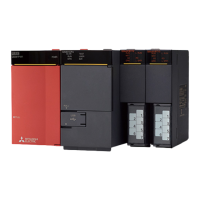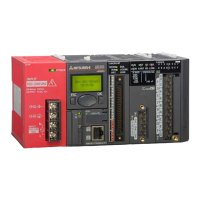Do you have a question about the Mitsubishi MELFA CR1D and is the answer not in the manual?
| Protection Class | IP20 |
|---|---|
| Type | Robot Controller |
| I/O Points | 32 inputs / 32 outputs (standard) |
| Programming Language | MELFA BASIC V |
| Communication Interfaces | Ethernet, RS-232 |
| Model | MELFA CR1D |
Explains the content and purpose of each instruction manual and symbols used.
Covers essential safety measures and precautions for robot operation and maintenance.
Details the buttons and display panel of the robot's operation panel.
Explains the functions of each key on the teaching pendant (R32TB).
Outlines characteristic functions related to robot movement and control.
Guides on navigating and operating the teaching pendant menu screens.
Explains the manual adjustment of robot position using jog feed modes.
Covers methods for programming using MELFA-BASIC V, including creating and editing programs.
Describes procedures for testing and correcting errors in created programs.
Explains how to set operation speed, select programs, and start automatic operation.
Details the procedure for turning the servo power ON and OFF for safety.
Explains program management operations like display, copy, rename, and delete.
Explains how to set the origin position and release brakes.
Outlines the functions and specifications of the MELFA-BASIC V programming language.
Provides detailed explanations of MELFA-BASIC V format and syntax.
Sets movement range, coordinate system, and items related to the hand.
Sets items pertaining to program execution and robot language.
Details how to set tool data at the hand tip and mechanical interface.
Specifies robot path behavior when paused during automatic or step feed operation.
Illustrates how to automatically run a robot program when the controller power is turned on.
Sets hand and workpiece conditions for optimum acceleration/deceleration.
Explains the alarm generated when the robot approaches a singular point.
Details how to use the warm-up operation mode to improve performance in low temperatures or after stops.
Explains how the robot passes singular points using XYZ jog and linear interpolation.
Describes the function that detects interferences and stops the robot quickly.
Details dedicated I/O signals and their assignments.
Provides timing charts for external signals like START, STOP, SRVON, etc.
Refers to separate documents for wiring and aspects of emergency stop input.
Explains the configuration flag indicating robot posture (Right/Left, Above/Below, Nonflip/Flip).











